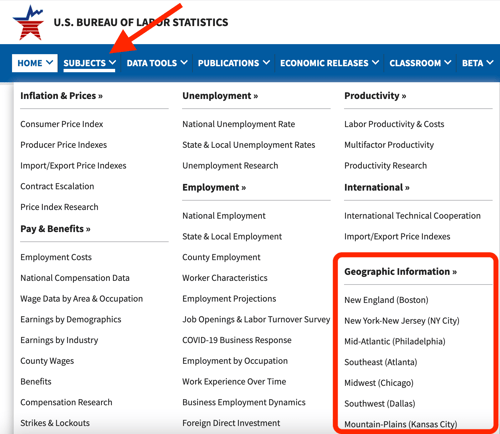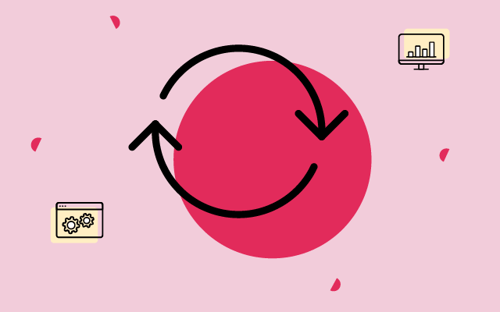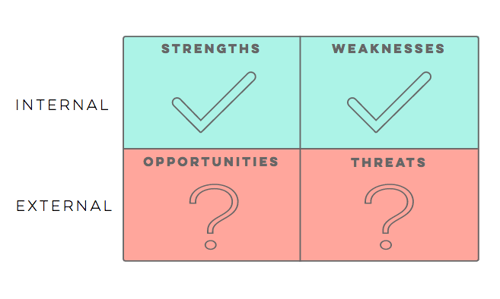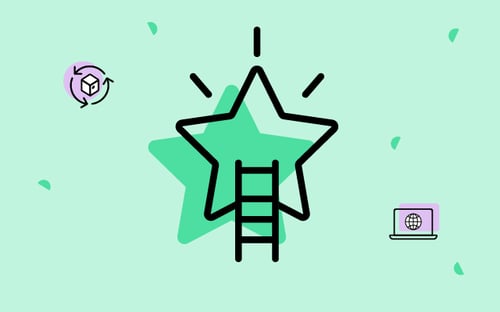There’s no question that generative AI is rewriting the rules of go-to-market strategy. But while the technology is evolving at breakneck speed, most GTM teams are still figuring out how to harness it effectively — without drowning in hype, tools, or bad AI prompts.
To cut through the noise, we brought together two of the sharpest minds in product, AI, and GTM:
- Claire Vo, CPTO at LaunchDarkly and founder of ChatPRD — one of the most widely used AI tools for product managers.
- Eilon Reshef, co-founder and CPO of Gong — the company that pioneered AI-powered conversation intelligence and transformed how modern sales teams operate.
What followed was an honest, wide-ranging conversation on where AI is making a real impact, where it’s still falling short, and how GTM leaders can stay ahead.
If you missed it, you can watch the full recording here — but here are three insights that stood out.
1. AI Agents Are Real — and They’re Already Talking to Each Other
A major theme of the discussion: the rapid evolution of AI agents — tools that don’t just respond to prompts but proactively complete tasks, take initiative, and even collaborate with other agents.
Claire offered a real-world example:
“I am already using a multi-agentic experience where agents are passing tasks directly to one another and generating real work with minimal oversight from me.”
In her own workflow, ChatPRD (her PM copilot) communicates directly with Devin (an AI software engineer from Cognition Labs), essentially speccing and shipping software together.
“They generate basically full product experiences for me where I’m sort of leaning back watching… I get the output or approval clicks, but they’re already working together.”
Eilon brought a pragmatic counterbalance:
“A chatbot is 2024. An agent is 2025.”
He pointed out that while the tech is promising, true autonomy is still rare — especially in enterprise environments where control, process, and repeatability matter.
“Most organizations don’t want a self-deciding creature. They want to build guardrails.”
The reality? Somewhere in between. The tools exist. The adoption curve will depend on infrastructure, trust, and clear, high-impact use cases.
"A chatbot is 2024. An agent is 2025."

Eilon Reshef
Co-Founder & CPO @ Gong
2. AI Isn’t Taking Jobs — It’s Reshaping Them
One of the biggest questions surrounding AI is also the most personal: What does this mean for the people doing the work today? For Claire, that question is already outdated. The conversation has shifted from job elimination to job transformation. Roles aren’t disappearing — but they are being redefined by the tools we now have at our fingertips.
“It’s not about whether roles are going to be eliminated… it’s about who’s going to do the work, and what shape those roles take when they’re powered by these tools.”
She described being asked if Deep Research could replace the need for a product marketer entirely. Her answer was less of a dismissal and more of a wake-up call to PMMs: evolve or risk being outpaced by AI-powered peers.
“Don’t prepare for the now. The now is moving incredibly fast. Place a reasonable bet on where the world will be in two years, and build your career to be prepared for that.”

Claire Vo
CPTO @ LaunchDarkly
Founder of ChatPRD
Eilon echoed this sentiment, calling out the real opportunity in front of us: freeing people from low-leverage tasks.
“There’s a little bit of an obsession with eliminating jobs. But the real benefit of AI is not replacing people — it’s removing the work.”
For GTM teams, that means automating the manual parts — summarizing customer calls, generating creative, iterating on messaging — so they can focus on strategy, differentiation, and delivering impact.
3. Critical Thinking Still Matters — Maybe More Than Ever
A standout moment in the discussion came in response to a recent Microsoft study that raised a provocative concern: Could over-reliance on generative AI actually reduce critical thinking in the workplace?
Claire’s response was grounded and nuanced. She emphasized that while cognitive capacity is limited, AI can help preserve it — allowing us to focus our mental energy on work that truly demands it.
“There is a limit to our cognitive capacity. What’s interesting about AI is the ability to preserve that capacity for tasks that require it — and avoid wasting it on tasks that don’t.”
She illustrated this with a personal example: teaching her son to code with ChatGPT. His workflow? Ask GPT for Python, paste it into Google Colab, and run it. Her rule?
“That’s great. Now we go line by line and read the code.”
Eilon noted the growing sameness in AI-generated content — and how easy it is to spot when someone has relied too heavily on a tool without injecting original thought.
“When I get a document that feels a little bland, it’s always like, ‘Did you use an LLM to write this?’ And the answer is usually yes.”
That theme — AI as co-pilot, not autopilot — surfaced throughout the conversation. These tools can accelerate output, but the value still hinges on human judgment, creativity, and clarity of perspective.
“It’s very obvious when these tools are used by people who don’t have a point of view,” Claire said. “It’s not an excuse to skip that step — it’s a way to make your point of view more defensible.”
"We only have so much brain processing that we can do, and it doesn't make sense for us to use our critical thinking skills on some of the more sort of mundane or boring tasks. In fact, that's a superpower AI can give us, but we need to make sure we don't get caught in the trap of of trusting everything that comes out of it."

Jon White
SVP @ Crayon
Across all three takeaways, one theme was clear: AI is no longer just a curiosity — it’s a capability. And while the tech is evolving fast, the leaders who benefit most will be the ones who learn, experiment, and stay grounded in strategy.
So where do you start? It helps to know what’s out there.
The Tools (and Newsletters) You Should Know
No AI webinar is complete without a rapid-fire tool roundup — and this one delivered. Here's a short list of what was mentioned:
-
Suno – AI music generation (used to create product launch songs like the one heard in the webinar!)
-
ChatPRD – Product manager copilot (Claire’s tool)
-
Devin – AI engineer from Cognition Labs
-
Gong – AI-powered sales intelligence (Crayon integrates natively)
-
ElevenLabs – Audio generation (used to preview scripted launches as podcasts)
-
NotebookLM – Google’s research summarization engine
-
HeyGen – AI video generation
-
Perplexity AI – Real-time research with cited sources
-
Pixelcut – AI-powered image editing
-
Claude – Conversational AI assistant from Anthropic, known for reasoning and summarization
-
DALL·E – AI image generation from text prompts (available inside ChatGPT)
-
Crayon – Competitive intelligence platform for GTM teams (and your hosts for this webinar!)
For staying current, Eilon recommends TLDR and AlphaSignal as go-to newsletters. Claire added her personal hack: an AI accountability buddy — a friend who pushes her to test new tools weekly.
For staying current, Eilon recommends TLDR and AlphaSignal as go-to newsletters. Claire added her personal hack: an AI accountability buddy — a friend who pushes her to test new tools weekly.
Final Thought: It’s Time to Experiment
One of the last questions posed to the panel was simple: What should a CMO do to get their team ready for this new era? Claire’s answer:
“Give your team an entire week and say, do nothing but try to do your job with AI. Come back and tell me what you learned.”
It doesn’t need to be perfect. But it does need to start.
Let’s get to work.
🎥 Want the full conversation?
👉 You can watch the entire session on-demand here 👈
And if you’re hungry for more, stay tuned — we’ll be releasing a deep dive on AI tools, use cases, and workflows for GTM professionals soon.

Seeing is believing! Check out Crayon for yourself.
Take a Product TourRelated Blog Posts
Popular Posts
-
 The 8 Free Market Research Tools and Resources You Need to Know
The 8 Free Market Research Tools and Resources You Need to Know
-
 6 Competitive Advantage Examples From the Real World
6 Competitive Advantage Examples From the Real World
-
 How to Create a Competitive Matrix (Step-by-Step Guide With Examples + Free Templates)
How to Create a Competitive Matrix (Step-by-Step Guide With Examples + Free Templates)
-
 24 Questions to Consider for Your Next SWOT Analysis
24 Questions to Consider for Your Next SWOT Analysis
-
 How to Measure Product Launch Success: 12 KPIs You Should Be Tracking
How to Measure Product Launch Success: 12 KPIs You Should Be Tracking

